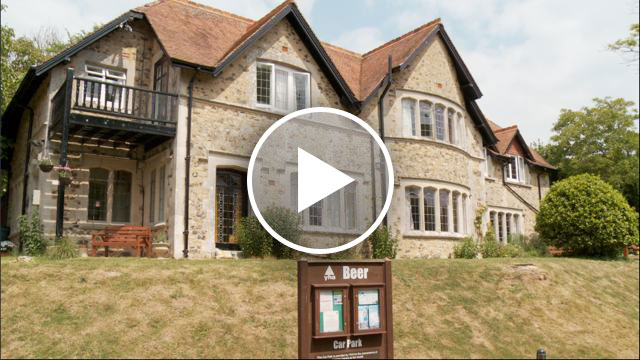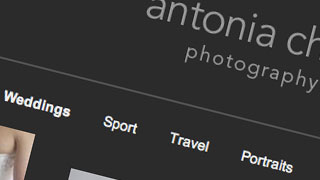Do you need a website as well as social media?
Tuesday, November 15, 2011 at 10:10AM
Tags:
webdesign,
seo,
social media
Filed in: Website design
Read and add comments (0)
This article is going to look at the differing roles of social media and your website. We’ll explore the difference between the two as well as looking at the overriding importance of your website.

TV ads and Facebook 'Pages'
You may have noticed many big companies showing Facebook page addresses at the end of their TV ads, where once there would have been their own website displayed. On the surface, this appears as though the Facebook page has effectively replaced the website.
What's actually happening is that these companies are running a specific campaign which aims to harness the viral power of social media to increase the reach of their ads. They will more than likely be using an advanced landing page on their Facebook page to obtain email addresses as well as other mechanisms to incentivise people to share and talk about their product.
What's happening is that social media is being used as a multiplier of the effectiveness of a specific marketing campaign. Once upon a time, an ad would have a goal of getting a new customer to buy a product or at least visit a website, now the idea is to generate social hype about the product, which will in turn result in more sales.
What's more, all traffic that goes through the social media channels will have an easy path to return to the company's actual website where they can invest further in the brand and product as well as actually buying the product, or finding out where they can buy the product.
The important difference between big companies and the 'small business'
It is important to remember the big difference between these large national companies and a small business in terms of how their products are sold. If a product is available to buy off-the-shelf in high street shops and supermarkets, then the aim of the marketing is to ensure a customer chooses that product over their competitors as they are walking down the isle. This is why brand reinforcement is so important. Social media is particularly effective at this because a large part of this sort of marketing is reassuring people that many other people are also making the same choice.
If you're a small business, however, things are quite different. If you're selling a product you're most likely going to be selling that product on your website. For you then, the role of your own website is quite clear. You can use social media to attract more interest in your product and use it as a marketing channel, but you'll still need those people to end up on your website to make a purchase.
But what about if you're selling a service? In your case, your online goal isn't the sale of a product, it is lead generation. A 'lead' is someone who makes contact with you and will potentially use your service. If your business works like this, you might be starting to think that an active social media presence might be sufficient at achieving this. After all, social media makes it very easy for people to get in touch with you.
However, if we explore why people actually use social media we'll see why this wouldn't be nearly as effective as if you combined it with a real-world website.
Can small business still use social media 'Pages'?
Absolutely, yes. Facebook and Google+ 'Pages' are still a great way for small businesses to represent themselves on social media. In their basic format though, they are still very similar to a normal personal page. That is, they include a list of shared links or messages.
Although they do have a handy way of listing key information about your business using the profile fields, this is of course no substitute for actually publishing quality content on your own website.
One of the main differences between a 'Page' and a normal personal account on social media sites is that the 'Pages' are inherently more public. Information is public by default and there is no need to become 'friends' before you can view content from a 'Page'.
Other than that and a few other technical differences, the format is essentially the same.
The social media format
Social media is effectively a micro-blogging platform designed for sharing content and short messages. We can broadly classify the vast majority of social media content as either a brief message (or 'status'), or a link to larger content elsewhere.
The people who use social media use it because they enjoy being shown content from those who they respect enough to 'follow/like/add'. There is so much content out there these days that people are waiting for content to be recommended to them as a way of filtering the pages, articles, images and video they want to view.
In many ways this process is a refreshing and natural return to the old fashioned way of recommending people and things to others. Instead of relying on a search engine to discover who is trustworthy (and lets face it, there's a limit to how effective a search engine can be), people are using other people's experience and recommendations as a starting point for their online exploration.
Social media is for sharing, not publishing
So, in summary, it's important to remember that the main role of social media is to share content, not publish it. For that, you still need a great website. In fact, a good quality website has never been more important if you want others to share your content.
Quick guide to �Like-gate� or �Fan-gate� pages on Facebook
Wednesday, November 9, 2011 at 07:53PM
Tags:
facebook,
webdesign,
social media
Filed in: Website design
Read and add comments (0)
If you've visited any cool Facebook pages recently, you'll probably have landed on a special tab within the page offering a juicy incentive to 'Like' the page.

Once you do that, you'll be thanked with another page and then rewarded for your good deed.
In short, the page knows if you've 'Liked' it and shows you different content accordingly. This is called a 'Like-gate' or 'Fan-gate'.
Incentives can range from free content to competitions and discounts. Obviously the trick here is to use a mechanism that justifies collecting their name and email address. This is why competitions are effective. People associate giving their name and email address with entering a competition (how else would they expect to be notified of winning?) so won't mind doing so after 'Liking' your page.
Here are some possible ideas to get you started:
- Not-liked see: "Like us to get free access to exclusive content" (ebook, article, video etc).
Liked see: "Enter your email address to receive the content (or username/password to access content). - Not-liked see: "Like us to enter our competition for a chance to win (something cool)."
Liked see: "Enter your email address so we can notify you". - Not-liked see: "Like us to get £20 off your next purchase"
Liked see: "Enter your email address to receive discount coupon."
The idea with a 'Like-gate' page is that you only need to show the visitor the competition signup page once they've clicked the 'Like' button - this makes the whole thing much more like a reward and far less daunting. The Facebook technology that allows this to happen is what makes the approach so effective.
What you're effectively doing is making the competition exclusive, i.e only to people who've 'Liked' the page, but also effectively only once they give you their email address.
The great thing is that Facebook lets you set this tab as the default 'landing tab' for new visitors to your page, so your competition, or other incentive, can be the first thing your visitors see.
Remember this is a simple case of effort and reward. You should ensure the reward outweighs the effort it takes to click the 'like' button (and enter their email address).
You might be wondering how to set this up on your own Facebook page. The problem is, it's pretty tricky. There are some 'apps' you can use (many are subscription-based) but if you want to come up with something that looks totally branded, and exactly what you're after, you'll probably need to enlist a web developer to build the tab for you.
4 Quick Ways to Improve your Website Content Writing
Wednesday, November 2, 2011 at 08:12AM
Tags:
seo,
content,
tips
Filed in: Website design
Read and add comments (0)
Now that you’ve got a great new website, and you have the power to control your own content with a CMS like SetSeed, you’ll be eager to start writing new content.

As a web designer I have setup countless CMS websites for customers of all computer abilities. Although SetSeed is really easy to use, it can’t write content for you. The following practical guide will help you keep all your great content consistent and well formatted. Please note this is as much a reminder for me as anyone else; I know I’m guilty of at least one of the following!
1. Use capital letters at the beginning of sentences.
I often see novice typists neglect to add capital letters at the beginning of sentences. If your keyboard skills are a bit lacking, it's quit understandable that you might want to avoid using the Shift Key while typing a letter. However, if you're writing content for the web, you really need your content to look professional. Therefore it's essential to put in the extra bit of effort to format your sentences correctly. The same goes for adding ‘full stops’ (periods if you’re in the USA) at the end of course.
2. Use “Their”, “There” and “They’re” in the right place.
- “Their” is possessive, i.e “The cats sat on their mats”
- “They’re” is just short for “They are”, i.e “They’re a really great bunch over at Phototropic”.
- “There” means “over there”.
3. Find your correct apostrophe character.
Correct: You’re
Incorrect: You`re
Incorrect: You're
The first one is a correct apostrophe character, the second example is a backtick, and the third is a prime mark.
4. Stick to a consistent narrative voice.
Firstly, it’s ok to use the first person when writing your web content. Avoid using ‘I’ when writing your main website content (but it’s ok for things like blog entries or articles which are directly credited to a single author, and a more personal tone is appropriate). You can use ‘we’ or ‘us’ to refer to your business, but avoid doing so too often. Your visitors are more interested in what your business can do for them, so try and turn a sentence around and use ‘you’ and ‘your’ instead. Most importantly of all, don't mix using ‘I’ with third person references to yourself in the same piece of writing.
If you’re a self-employed individual, and your website is just about you and your services, it can be hard to know how to write your content. If you choose to refer to yourself as ‘I’ throughout, it can read a little oddly as people don't expect that tone in the context of a normal website. If you do this you need to ensure the presentation of your website makes it very clear that it’s you who’s writing the content, so they expect it to be written in the singular first person. For example your website should look as though it represents a person rather than a business.
Often a better approach is to use third person for all the main website content. It can feel a bit strange writing about yourself like this so you might consider getting someone else to write about you instead. You can still use your blog to write naturally in the first person. Having your services described in the third person can also add credibility as it implies that it’s not just your own words used to promote yourself.

 Filtering email spam without risk of false positives
Filtering email spam without risk of false positives Why you don't need a separate mobile website
Why you don't need a separate mobile website Great crested grebe footage used in BBC's Natural World
Great crested grebe footage used in BBC's Natural World Website Design Primer: Common Concepts and Jargon Explained
Website Design Primer: Common Concepts and Jargon Explained New webfilm production: Beer YHA
New webfilm production: Beer YHA New SetSeed powered website design: Antonia Chick Photography
New SetSeed powered website design: Antonia Chick Photography 6 Steps to Improving Search Engine Ranking for Beginners
6 Steps to Improving Search Engine Ranking for Beginners



